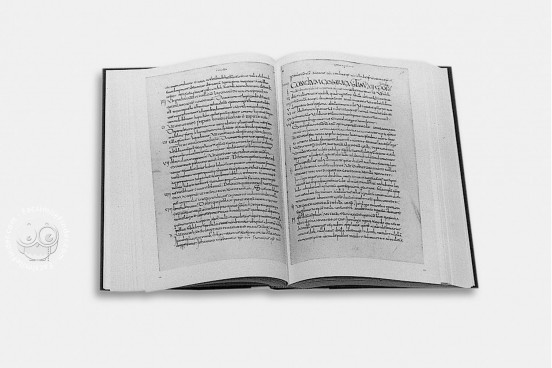The Vienna Hispana Codex is a medieval collection of Church law compiled from papal decrees and the decisions of councils. The text is organized as a reference work for those needing to enforce the constantly developing legal principles governing the Church. The collection in the Vienna manuscript was one of the most influential of these compilations and remained one of the most authoritative until the Gregorian Church reform of the eleventh century.
The oldest surviving witness of the Collectio Hispana, as this compilation is known, is the Vienna Hispana Codex, written at the end of the eighth or the beginning of the ninth century in the vicinity of Metz. The codex served as an important source for successive copies, despite its many inaccuracies.
From Visigothic to Caroline Minuscule
The compilation is described as "Hispana" because of the text's probable origin on the Iberian Peninsula. Some experts believe that textual corruption in this, the earliest extant version was caused by the manuscript's scribes being unfamiliar with the Visigothic Minuscule of their exemplar.
The script of the Vienna Hispana Codex is an early Caroline Minuscule that contextualizes the manuscript in the region around Metz and the wider Rhineland. The manuscript is an important witness to the nascent script that would come to dominate the writing of manuscripts throughout most of Europe. It seems that numerous scribes were at work here, replacing one another after rather short intervals.
Bishop Bernhar of Worms
A sister manuscript made for Bishop Rachio of Strasbourg is the oldest known codex of the Hispana compilation. That manuscript was destroyed during the Siege of Strasbourg in 1870, thus making the Vienna Hispana Codex the sole surviving complete witness of the text.
A cryptic addendum contains twelve Greek letters along with a number in Latin numerals, DCCXXXVI (fol. 314r). Following an intricate analysis, experts believe that the inscription suggests that Bishop Bernhar of Worms was the owner of the manuscript around 810/11, shortly after its creation.
A later note reveals that the damaged book was newly bound in 1527 at the expense of Johannes Marquard, a jurist and imperial advisor (fol. 1r). The book was later part of the collection of Ferdinand II of Tyrol, Archduke of Austria, at Ambras Castle near Innsbruck. From there the codex was incorporated into the Viennese imperial library in 1665.
We have 1 facsimile edition of the manuscript "Vienna Hispana Codex": Wiener Hispana-Handschrift facsimile edition, published by Akademische Druck- u. Verlagsanstalt (ADEVA), 1974
Request Info / Price
